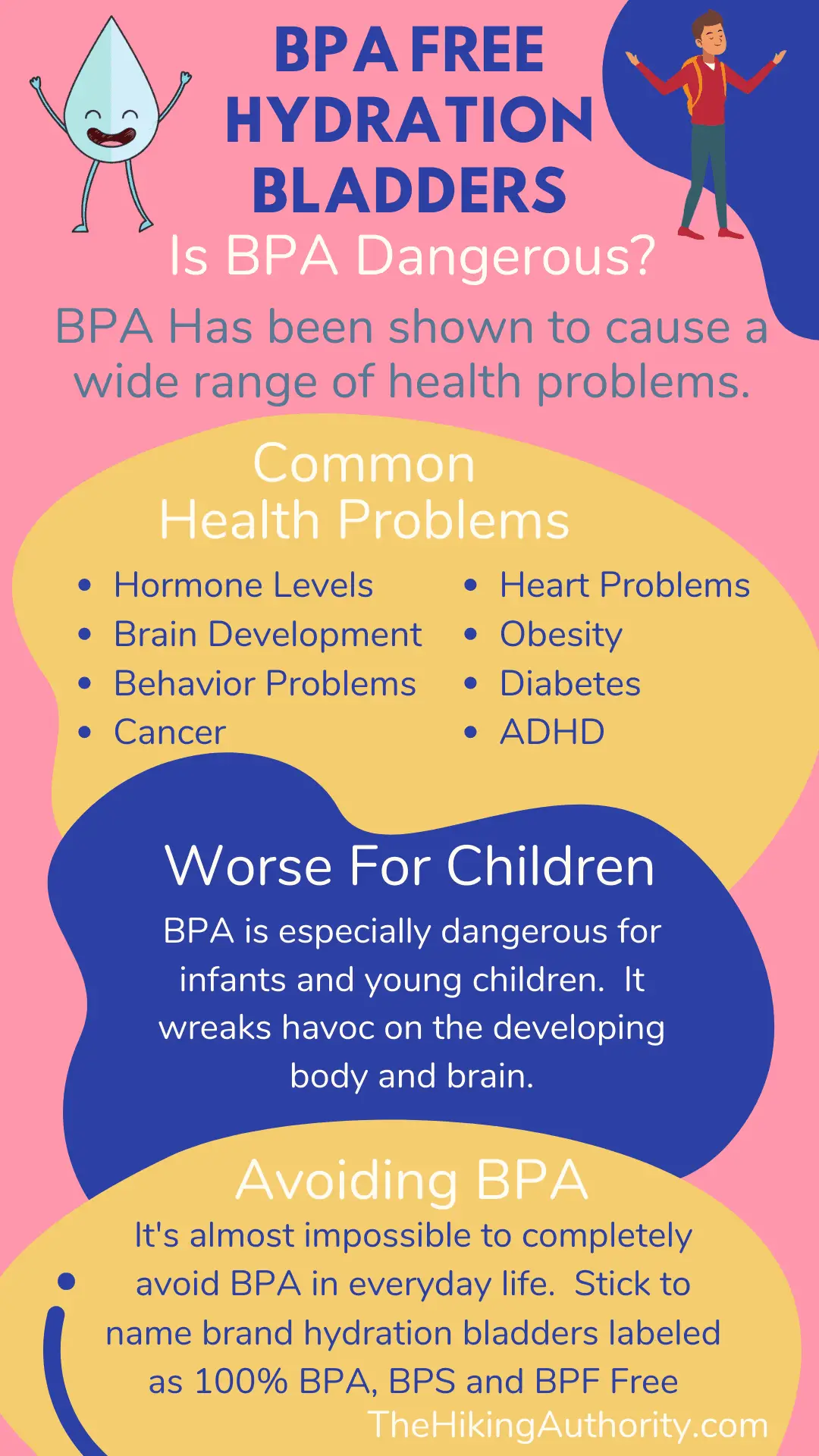Take a look at the description for any of the major hydration bladder brands(Camelbak, Platypus, Hydrapak, Osprey). I can almost guarantee they label their products as 100% BPA, BPS and BPF free.
Unless you’re a doctor or scientist that probably doesn’t mean all that much. Why Should I Buy a BPA free hydration bladder? Is BPA actually dangerous?
What is BPA?
BPA (aka bisphenol) is an industrial chemical found in most plastic products and glues. Food containers, water bottles, bottle tops and water supply lines all contain BPA.
Why is BPA a problem? Research has linked BPA to a growing list of health effects including brain, prostate, fertility, and heart conditions. Most of these issues have been found in babies/children exposed to BPA, but it’s unknown how BPA affects adults.
Manufacturers have been creating more and more products labeled as BPA free. Most of the time they’re labeled as BPA free; if not there’s probably BPA.
Why Should I Get a BPA Free Hydration Bladder?
There’s just no reason to ingest BPA when you don’t have to. Most studies link the major dangers of BPA to children, but it’s not great for adults either. It’s one of those plastics called phytoestrogens.
Doctors/scientists think phytoestrogens mimic estrogen causing fertility issues, breast cancer, high-blood pressure, diabetes, and more. Just because a product is labeled as BPA-Free doesn’t mean it’s safe.
Which Hydration Bladders are BPA Free?
Stick to the name brand hydration bladders. Just about every off-brand hydration bladder contains harmful chemicals. Hydration bladders are cheap, Is that 10$ difference really worth ingesting harmful chemicals?
Personally, I think you should stick to the 20-30 dollar price point and a name brand. Skip that 10$ hydration bladder you found on Amazon, it’s just not worth it. The bite valve probably sucks, it will eventually leak and it’s going to be hard to drink out of.
BPA Free Brands(Definitely Missed a Few)
- Camelbak
- Hydrapak
- Osprey
- Platypus
- Gregory
Watch Out For The Term “BPA-Free Film”
Most of the budget manufacturers have been getting tricky with their terminology. They’re labeling products as having a BPA-Free Film. These manufacturers are being purposely deceptive.
Products labeled as having a “BPA-Free film” still have BPA in the actual hydration reservoir. The anti-microbial film is the only aspect of the bladder that doesn’t contain BPA. After a few wash cycles, that film is worn away and you’re ingesting BPA
You Can’t Really Avoid BPA
BPA is an industrial chemical that’s found in most household plastics. It’s almost impossible to completely avoid BPA. Your deli meat is in a BPA bag, pasta in a BPA container and pizza in BPA wrap. Unless it’s labeled as 100% BPA free you’re probably ingesting BPA.
- BPA is in Everything: BPA is so common that it’s completely unavoidable. Although it’s banned in baby bottles and sippy cups it wasn’t banned altogether.
- BPA is The Enemy You Know: Just because your product is labeled as BPA free doesn’t mean it’s safe. Most manufacturers switch to a lesser-known(while still dangerous) chemical that isn’t in the public eye. They want that BPA Label on their box.
- Encounter 1000’s of Chemicals Everyday: Even if you effectively limit your exposure to BPA you will still encounter dangerous chemicals. Many of those are linked to human health risks.
Children and Babys are At Risk
Research has linked BPA to a wide range of infant health problems. That’s why BPA is banned in baby bottles and sippy cups. Don’t let young children drink out of a hydration bladder that isn’t labeled as BPA-Free. Who knows if it will cause long term damage, but it’s not worth the risk.



